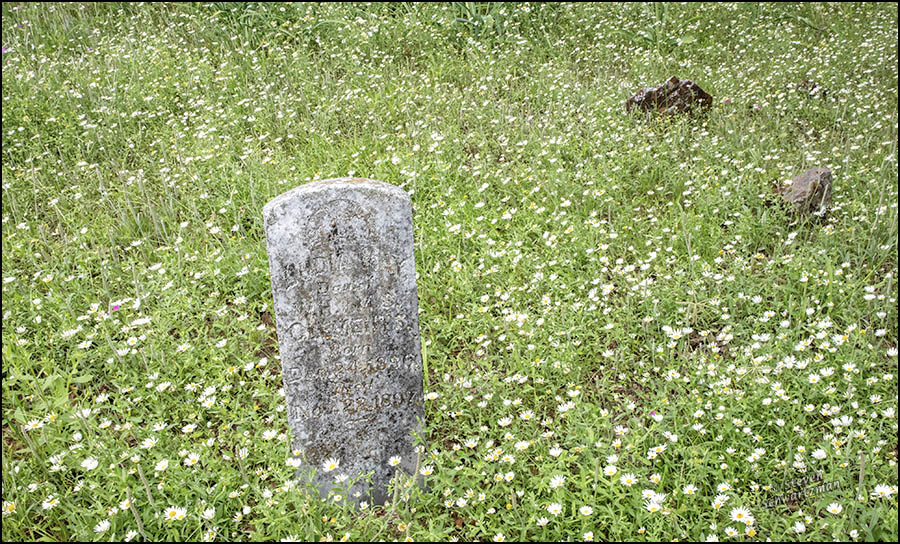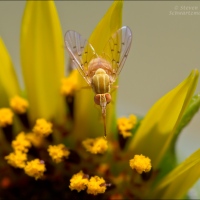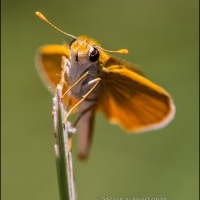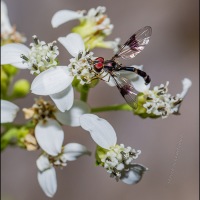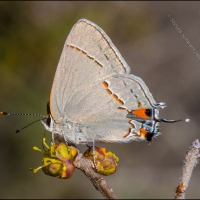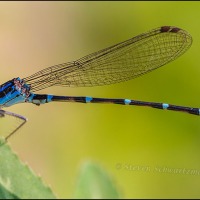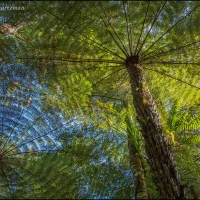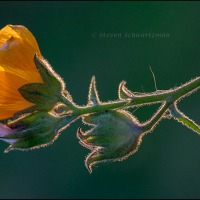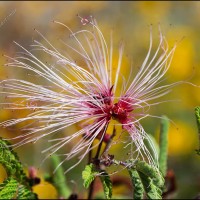Posts Tagged ‘colony’
Yet another wildflower cemetery
On May 5th I drove along TX 71 in Bastrop County and stopped several times after spotting great displays of mixed roadside wildflowers, as the two middle pictures in yesterday’s post showed. One place where I pulled over turned out to be right outside the Alum Creek Cemetery, which I then saw was home to quite a few lazy daisies (Aphanostephus skirrhobasis). Also present were smaller amounts of phlox and black-eyed Susans (Rudbeckia hirta).
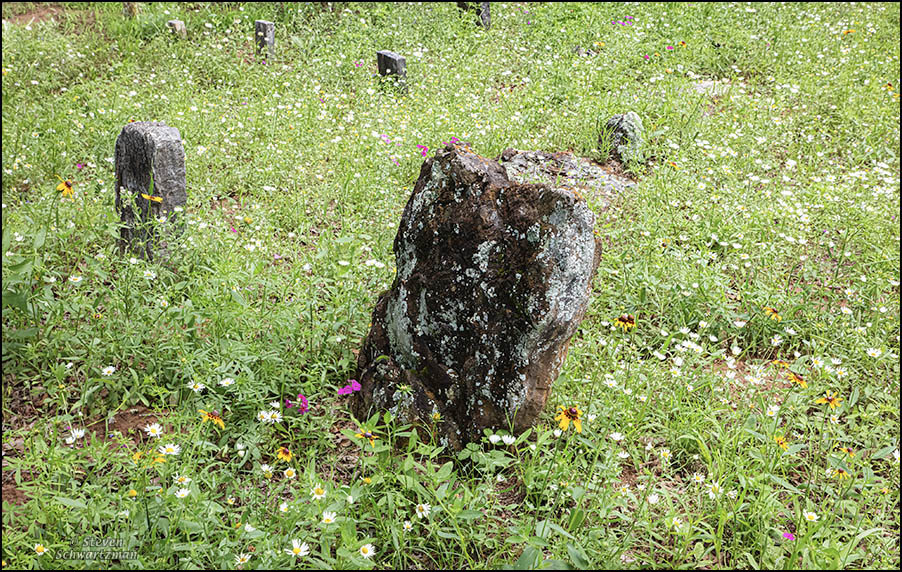
Now I’m wondering if central Texas has more wildflower-strewn cemeteries per capita than other places.
Are there any cemeteries like these in your area?
§
§ § §
§
Humans being what we are, and the journalistic profession not being what it ought to be, the threats of resource scarcity and overpopulation remain widely believed. We have evolved to be zero-sum thinkers, for in the days of yore, if one member of the band ate more of a slaughtered antelope that really did mean less meat for everyone else. Today, we still think that the more people we have on the planet, the less meat, grain, or fuel there will be to go around. Our stone-age thinking remains oblivious to the advances in trade and technology that allow us to produce more stuff and exchange our surpluses across vast distances. In the meantime, the media, which is more interested in apocalyptic clickbaiting than in reporting on the real state of the world, exaggerates the possibilities of catastrophic future scenarios. If it bleeds, it leads.
That’s from Marian L. Tupy’s excellent April 22nd article “More People, More Prosperity: The Simon Abundance Index,” with subtitle “The Simon Abundance Index 2024 finds Earth’s resources 509% more plentiful than in 1980.” The article includes graphs and facts to make its points. (That last sentence may sound banal, but plenty of people make plenty of claims without providing evidence for them.)
© 2024 Steven Schwartzman
More from Bastrop County
On May 5th in the eastern part of Bastrop State Park I noticed that in many places black-eyed Susans, Rudbeckia hirta, were thriving on the stony ground. Later, along TX 71 near Powell Cemetery Rd. in Smithville I couldn’t help stopping for a dense display of wildflowers by the side of the highway. The upright plant with yellow flowers was an Engelmann daisy, Engelmannia peristenia. The red ones were blanketflowers, either Gaillardia pulchella or Gaillardia amblyodon or possibly both.
In the next picture, black-eyed Susans predominated (and some appeared above as well).
Finally, along TX 95 south of Elgin, a roadside embankment yielded a view of densely mixed wildflowers. The pink ones were Texas thistles (Cirsium texanum).
§
§ § §
§
My country is imploding
The U.S. Department of State has implemented a finalized policy making promotions contingent on employees‘ ability to document their active engagement in Diversity, Equity, and Inclusion (DEI) practices. Federal agencies, like the State Department, were required to update employment and promotion standards following President Joe Biden’s Executive Order 13985, which “established that affirmatively advancing equity, civil rights, racial justice, and equal opportunity is the responsibility of the whole of our Government.”
“We made the change that if you wanted to be considered for promotion at the Department of State, you must be able to document what you are doing to support diversity, equity and inclusion, and accessibility. This is how you are judged for promotion,” Gina Abercrombie-Winstanley explained during a speech at the City Club Forum in April last year. Abercrombie-Winstanley, the former ambassador to Malta, was serving as the State Department‘s chief diversity and inclusion officer when the executive order was issued and was tasked with laying the groundwork for the new employment policy.
You can read the full article. As Nellie Bowles summed it up: “Fine, I will heed the call. I will step up. Ours will be bullets made by only the gayest and most feminist hands—mine. They will not be shaped right. They crumble to the touch. But they will be equitable.”
© 2024 Steven Schwartzman
Two species of Monarda
On May 5th in Bastrop State Park two species of Monarda flourished. The top picture, taken not far inside the park’s entrance, shows the same horsemints we have in Austin, Monarda citriodora. The yellow flowers are Texas dandelions, Pyrrhopappus pauciflorus, and toward the right you see a couple of Texas thistle “powder puffs,” Cirsium texanum. Within sight of that colony I found a group of what appeared to be spotted beebalm, Monarda punctata, with plenty of black-eyed Susans, Rudbeckia hirta, intermingled.
§
§ § §
§
It’s not just the United States that’s going mad
To protect children from sexual exploitation, Canada must pass the Online Harms Act, says Prime Minister Justin Trudeau’s government. “I am the parent of two young boys,” said Justice Minister Arif Virani. “I will do whatever I can to ensure their digital world is as safe as the neighborhood we live in. Children are vulnerable online. They need to be protected from online sexual exploitation, hate, and cyberbullying.”
But Virani’s bill is totally unnecessary to protect children. Its real goal is to allow judges to sentence adults to prison for life for things they’ve said and for up to a year for crimes they haven’t committed but that the government fears they might commit in the future.
As such, Trudeau and Virani’s Online Harms Act (Bill C-63) is the most shocking of all the totalitarian, illiberal, and anti-Enlightenment pieces of legislation that have been introduced in the Western world in decades.
The Liberal government’s censorship legislation, when considered in the context of Trudeau’s sweeping abuse of governmental powers during and after the Covid pandemic and new subsidies for government propaganda, sets a new watermark in rising totalitarianism in Western societies.
You can read the rest of Stephen Moore’s alarming article. You can also watch a 12-minute video put out by the Canadian Constitution Foundation on the same subject.
© 2024 Steven Schwartzman
Purple amidst all the red and yellow
For some years now I’ve noticed mealy blue sage (Salvia farinacea) coming up each spring at the southwest corner of Burnet Rd. and Shoreline Dr. in far north Austin. On April 29th I stopped there to take advantage of the particularly dense colony of firewheels (Gaillardia pulachella) that had surrounded the sage.
§
§ § §
§
Public service announcement
You’ve probably heard from time to time about how scammers bilk people out of money. One scheme that’s been worked on older people is to contact them claiming to be a grandchild who’s in trouble and desperately needs money to get out of a jam. That gambit is likely to increase because with advances in artificial intelligence (AI), scammers can make fake videos and audios that look and sound just like the real person that the target of the scam knows.
As good citizens we should make people, especially older people, aware of that kind of scam. Even better, we should give them a defense. It occurred to me that anyone who gets contacted by somebody claiming to be a relative or friend in trouble should ask a question that only the real person would know the answer to. Examples are:
- Where did we vacation in 2005?
- What kind of pet did you have in junior high school and what was that pet’s name?
- What country did your mother’s mother immigrate from?
- You used to eat two foods together that everyone thought was a strange combination. What were they?
The more particular and unusual the question, the better. If the supposed relative or friend who’s in trouble doesn’t immediately answer or dodges and makes excuses for not being able to answer (“I’m so stressed out I can’t think straight”), that’s almost certainly evidence of fraud.
If you know someone you think might be vulnerable to that kind of scam, pass this advice along.
© 2024 Steven Schwartzman
More from along Interstate 35 north of Austin
Here’s more from along Interstate 35 in Georgetown on April 29th. The top view shows Engelmann daisies (Engelmannia perestenia), firewheels (Gaillardia pulchella), and three “globes” of antelope horns milkweed (Asclepias asperula).
§
§ § §
§
Yesterday’s post included an excerpt from a 1947 hearing in the U.S. House of Representatives. The witness was Ayn Rand. Born Alissa Rosenbaum, she, like my father, grew up under the tyranny of the Soviet Union and managed to escape and come to the United States in the mid-1920s. Now fast forward a century from their arrival:
A young woman was filmed at a New York University anti-Israel protest over the weekend praising North Korea’s support for Palestinians and their “shared struggle” against oppressors — with the “deranged” and “deluded” viral clip sparking fierce backlash online.
The footage, which was shared on X by the @thestustustudio account and has already been viewed more than 2 million times — showed the unidentified woman giving an apparent “teach-in” Saturday about North Korea’s solidarity with Palestinians.
“They have always upheld the right of Palestinian people to self determination and resistance and this is beyond moral and rhetorical support,” said the woman, who the original poster identified as a student, of North Korea — which has been ruled by a ruthless dicatorship for decades.
That’s the beginning of a May 6th New York Post article, which you can read in full. The woman—who of course hid behind a mask—is so delusional that she thinks North Korea, the most repressive régime in the world today, is an exemplar of freedom and justice.
© 2024 Steven Schwartzman
Interstate 35
On April 29th, after I documented great wildflowers in the median of the Capital of Texas Highway that borders my Great Hills neighborhood, we headed out after lunch toward Georgetown, about 20 miles north of Austin. The main highway through there is Interstate 35, whose margins and embankments in some sections did justice to Texas’s wildflower season. One such place was the southwest quadrant of the intersection with Leander Rd., where Engelmann daisies (Engelmannia perestenia) punctuated a dense colony of firewheels (Gaillardia pulchella). In the same quadrant a Texas thistle (Cirsium texanum) towered over the firewheels; that picture gives you a better feel for how large and dense the firewheel colony was.
§
§ § §
§
Rep. John McDowell: … Don’t [Russians] do things at all like Americans? Don’t they walk across town to visit their mother-in-law or somebody?
Ayn Rand: Look, it is very hard to explain. It is almost impossible to convey to a free people what it is like to live in a totalitarian dictatorship. I can tell you a lot of details. I can never completely convince you, because you are free. It is in a way good that you can’t even conceive of what it is like. Certainly they have friends and mothers-in-law. They try to live a human life, but you understand it is totally inhuman. Try to imagine what it is like if you are in constant terror from morning till night and at night you are waiting for the doorbell to ring, where you are afraid of anything and everybody, living in a country where human life is nothing, less than nothing, and you know it. You don’t know who or when is going to do what to you because you may have friends who spy on you, where there is no law and any rights of any kind.…
That’s from a 1947 hearing in the U.S. House of Representatives. Just like my father, Ayn Rand grew up under the tyranny of the Soviet Union and managed to escape and come to the United States in the mid-1920s. Tomorrow we’ll jump ahead a century from their arrival.
© 2024 Steven Schwartzman
More from close to home
From the median of the Capital of Texas Highway that borders my Great Hills neighborhood, here are more pictures of the wildflower extravaganza I documented there on April 29th. The yellow-fringed red flower heads are Indian blankets (Gaillardia pulchella). The yellow flowers are Engelmann daisies (Engelmannia perstenia) and the brown ones are Mexican hats (Ratibida columnifera). A few violet-colored silverleaf nighshade flowers (Solanum elaeagnifolium) were mixed in. Nearby, old plainsman (Hymenopappus scabiosaeus) stood out and some greenthreads (yellow, Thelesperma filifolium) joined the mix.
§
§ § §
§
Migrants [i.e. people who entered the United States illegally] in Denver on Monday submitted a list of 13 demands that they say the city must meet before they leave their packed encampment and head into shelters. The group refused to budge until their extensive list… is met….
That’s from a May 9th article by Alec Gearty in the New York Post. The article lists the 13 demands:
- Migrants will cook their own food with fresh, culturally appropriate ingredients provided by the City instead of premade meals — rice, chicken, flour, oil, butter, tomatoes, onions, etc. … Also people will not be punished for bringing in & eating outside food.
- Shower access will be available without time limits & can be accessed whenever — we are not in the military, we’re civilians.
- Medical professional visits will happen regularly & referrals/connections for specialty care will be made as needed.
- All will receive the same housing support that has been offered to others. They cannot kick people out in 30 days without something stable established.
- There needs to be a clear, just process before exiting someone for any reason — including verbal, written & final warnings.
- All shelter residents will receive connection to employment support, including work permit applications for those who qualify.
- Consultations for each person/family with a free immigration lawyer must be arranged to discuss/progress their cases, & then the City will provide on-going legal support in the form of immigration document clinics & including transportation to relevant court dates.
- The City will provide privacy for families/individuals within the shelter.
- No more verbal or physical or mental abuse will be permitted from the staff, including no sheriff sleeping inside & monitoring 24/7 — we are not criminals & won’t be treated as such.
- Transportation for all children to & from their schools will be provided until they finish in 3 weeks.
- No separating families, regardless of if family members have children or not. The camp will stay together.
- The City must schedule a meeting with the Mayor & those directly involved in running the Newcomer program ASAP to discuss further improvements & ways to support migrants.
- The City must provide all residents with a document signed by a City official in English & Spanish with all of these demands that includes a number to call to report mistreatment.
Like I said, chutzpah.
© 2024 Steven Schwartzman
Much closer to home
After 8 hours and 250 miles of wildflower hunting west of Austin on April 23rd, I lay low for almost a week. Not till the 29th did I head out with my camera again, initially “only” to a part of the Capital of Texas Highway that borders my Great Hills neighborhood. I put “only” in quotes because the highway median was actually quite a floral extravaganza, as you see here.
The yellow-fringed red flower heads are Indian blankets (Gaillardia pulchella). The prominent purple flowers are silverleaf nighshade (Solanum elaeagnifolium). You see them in the distance in the top picture, and a group of them closer below. A few Mexican hats (brown, Ratibida columnifera) are mixed in.

§
§ § §
§
You have to watch/read the moving speech “What It Means to Choose Life” that Douglas Murray gave when he accepted the Manhattan Institute’s Alexander Hamilton Award on May 6th. You’ll find out some of the things he experienced in Israel beginning right after Hamas’s slaughter of innocents seven months earlier.
© 2024 Steven Schwartzman
Dense Texas thistle colony
From April 22nd at the Wildhorse Ranch subdivision in Manor,
how about this dense colony of Texas thistles (Cirsium texanum)?
§
§ § §
§
The Oversight Board of Meta, the parent company of Facebook, is reviewing whether Facebook should keep letting users post slogans like “From the river to the sea, Palestine shall be free,” which have proliferated since October 7, 2023, after Hamas slaughtered 1200 people in Israel, torturing and raping many of them in the process, and continuing the mayhem by taking over a hundred hostages. In deciding whether Facebook should still allow such slogans or should ban them, the Oversight Board is soliciting public comments through May 21st. You can follow that link to submit a comment if you’d like.
A friend alerted me to this yesterday, and here’s the comment I left:
Many people repeating the chant “From the river to the sea, Palestine shall be free” have no idea what river and what sea they’re chanting about, nor what the implications of the chant are. The river is the Jordan, and the sea is the Mediterranean. The slogan means that Palestine will be free of Jews everywhere between those two bodies of water, which is to say everywhere that the modern state of Israel exists. Whether the Jews who live there now are to be “merely” expelled or outright murdered, the chant doesn’t specify. Either way, the fulfillment of the slogan entails committing millions of individual crimes.
Facebook has three choices. One is to do nothing and let users keep posting the slogan. That perpetuates the call for the expulsion or killing of the people in a sovereign nation, and is therefore not a just course of action.
A second option is to ban the slogan and all variants of it. That eliminates the particular call for the expulsion or killing of the people in a sovereign nation, but it comes at the expense of Facebook users’ desire to express themselves.
A third choice, and the one I recommend, is that whenever a user cites slogans like “From the river to the sea, Palestine shall be free,” Facebook should attach an explanation containing the substance of what I said in my opening paragraph. That way everyone who reads a post containing those slogans will know specifically what’s being called for: the commission of millions of crimes by expelling or killing the people in a nation. In order to do something about such a dangerous threat, we have to know that the threat is being made and who is making it.
© 2024 Steven Schwartzman
The farthest from home

The farthest point from home that we reached on April 23rd during what ended up being an 8-hour, 250-mile wildflower-seeking circuit west of Austin was along FM 152 a few miles into Mason County. As had been true for some land on Llano County Rd. 106 a little earlier, the land at our last stop wasn’t fenced—in fact a local resident who happened to drive by stopped to tell me to be on my guard for any loose bulls wandering about. Duly alerted, I still relished the freedom from barbed wire to move around and compose pictures as I wished.
§
§ § §
§
Some people in my country not only condone racism, they’re working to institutionalize it, even as they hypocritically prattle about “dismantling institutional racism.” For yet another example, you can read Neetu Arnold’s May 3rd article “Illinois’s Plan to Fund Public Universities on the Basis of Race,” with subtitle “Schools with abysmal graduation rates would get more money simply for enrolling minorities.”
© 2024 Steven Schwartzman
